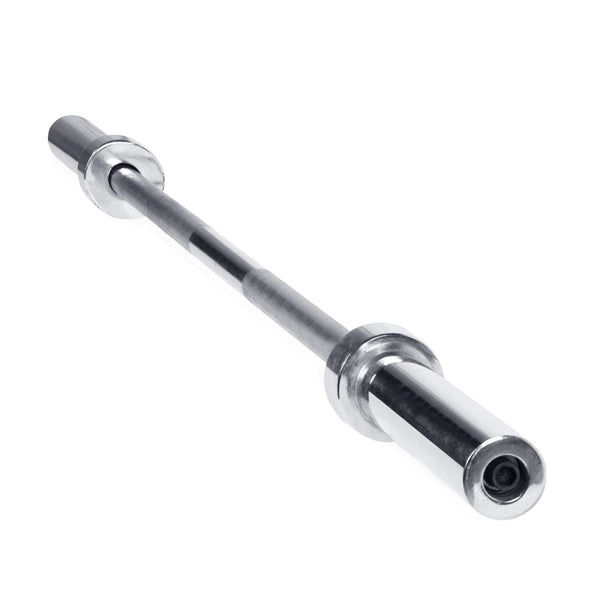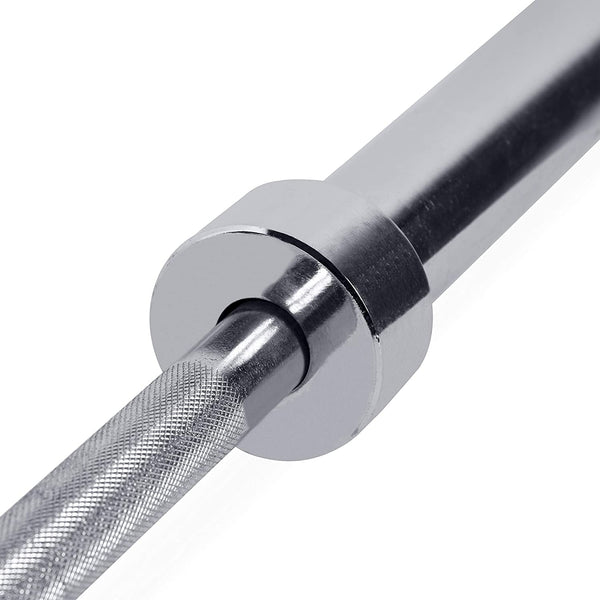Your Cart is Empty
March 01, 2024 3 min read
Having strong biceps is a goal for many gym-goers, as it’s an impressive show of strength and size. However, building bigger biceps requires more than just doing endless bicep curls. To truly maximize bicep gains, you need to understand which grip positions to use and how they can help you reach your goals.
Shop The Collection: BarbellsGrip position refers to the way one holds onto a weight while performing an exercise. The type of grip you use can vary from exercise to exercise, but certain grips are better suited for certain exercises and will result in better muscle growth. In this article, we’ll discuss how to use different grip positions for maximum bicep gains.
 Shop The Gear: CAP Barbell Olympic Chrome Bar, 6-ft, $95.99 USD
Shop The Gear: CAP Barbell Olympic Chrome Bar, 6-ft, $95.99 USD
The overhand grip is the most common grip used when doing bicep curls. It’s also the most effective for activating the biceps, as it puts your wrists in a neutral position. When using the overhand grip, your palms should be facing away from you and your thumbs should be pointing towards your body. This will ensure that your biceps are working hard throughout the entire range of motion.
Shop The Collection: BarbellsThe overhand grip is great for isolating the biceps, so if you’re looking to build bigger arms, this is the grip to use. It’s also the safest option since it doesn’t put any extra strain on your wrists or shoulders.
 Shop The Gear: CAP Barbell Olympic Solid Bar, 5-ft, from $63.99 USD
Shop The Gear: CAP Barbell Olympic Solid Bar, 5-ft, from $63.99 USD
The underhand grip is the opposite of the overhand grip. This grip involves wrapping your fingers around the barbell with your palms facing towards you. This grip activates the brachialis muscle, which is located beneath the bicep.
The brachialis muscle helps to increase overall arm size and strength, so using this grip can be beneficial for those looking to build bigger arms. Additionally, the underhand grip puts less strain on the wrists, making it an ideal choice for those with wrist injuries.
The neutral grip is a variation of the overhand grip. With this grip, your palms should be facing each other and your thumbs should be pointing up. This grip engages both the biceps and triceps muscles, which can help to maximize bicep gains.
The neutral grip is also great for isolating the biceps and can be used for different types of bicep curls. Additionally, it’s a safer option than the underhand grip, as it reduces the risk of wrist injury.
The wide grip is another popular grip used for bicep curls. Unlike the other grips mentioned above, this grip requires you to place your hands wider than shoulder-width apart. This grip activates the long head of the biceps, which is the portion of the bicep responsible for building size and strength.
The wide grip is especially effective for those looking to build bigger biceps. However, it can put a lot of strain on the wrists, so it’s important to use proper form when performing this grip. Additionally, it’s best to start with lighter weights and gradually increase the weight as you get comfortable with the movement.
Using different grip positions can help you maximize bicep gains and reach your fitness goals. The overhand grip is the most popular and effective grip for activating the biceps, while the underhand grip is great for isolating the brachialis muscle. The neutral grip is a variation of the overhand grip and is great for engaging both the biceps and triceps, while the wide grip is best for building bigger biceps.
No matter which grip you choose, it’s important to maintain proper form and use lighter weights until you get comfortable with the movement. Once you master the technique, you can gradually increase the weight to challenge yourself and reach your goals.
Shipping Protection gives you peace of mind while saving you time and money.
Shipping Protection provides coverage for eligible orders that are lost or damaged in transit, or stolen after delivery has been confirmed by the carrier. MAGMA Fitness, through its partners, administers the protection program and may receive compensation for these services. Coverage is subject to the terms, conditions, and exclusions outlined in our Shipping Protection Terms & Conditions.